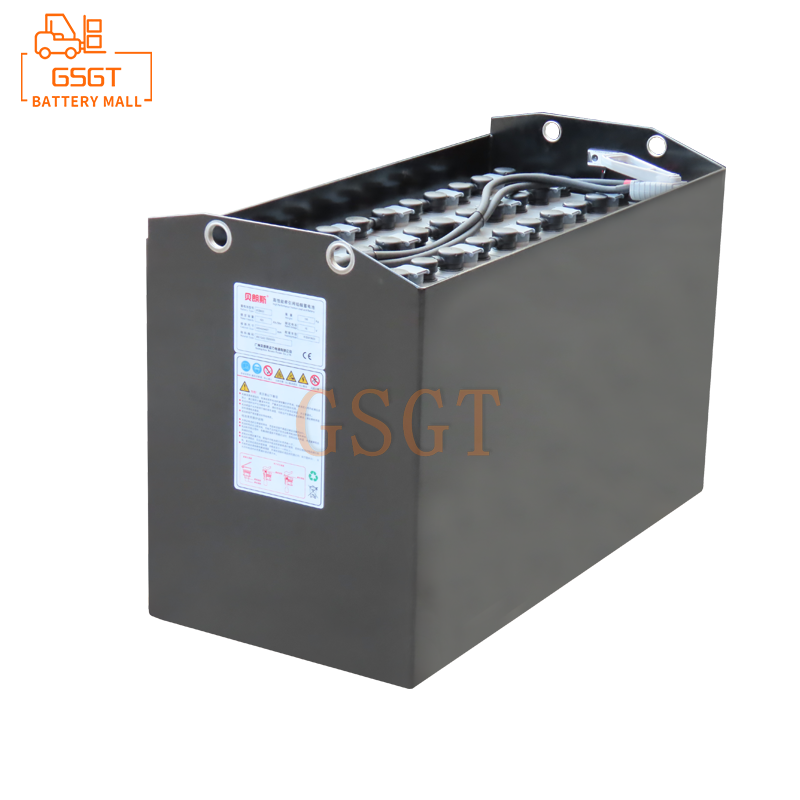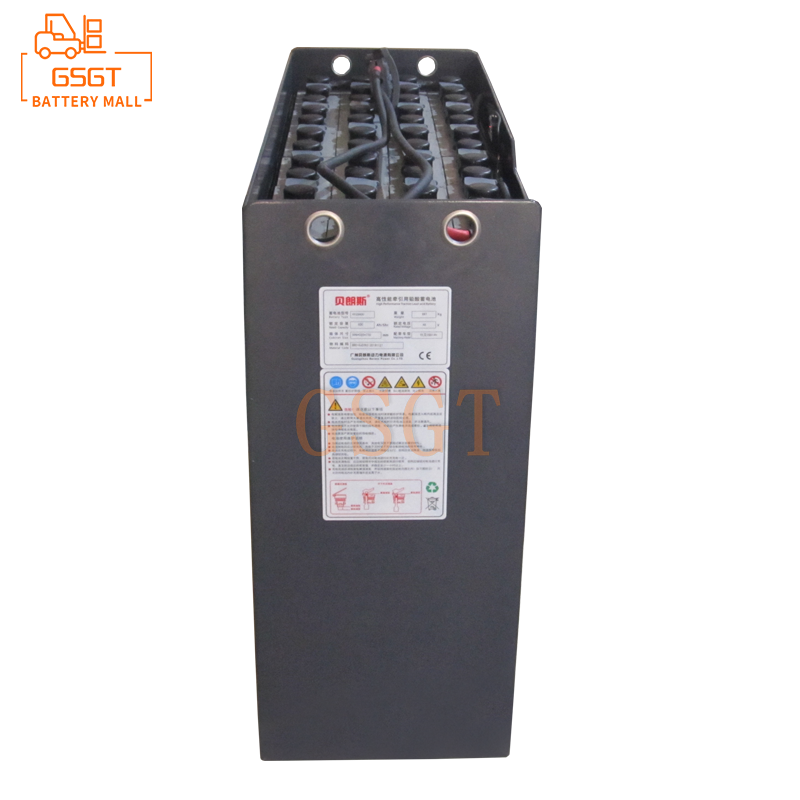Time:2025-07-11 11:20:02
Browse:631
In the operation system of forklifts, lead-acid batteries are one of the core power sources. As a key connection component for both the internal and external circuits of the battery, the connection strip's condition directly affects the power supply stability and service life of the forklift. Once the connecting strips become loose, corroded or broken, it may lead to difficulties in starting the forklift, reduced power, and even cause more serious malfunctions such as battery damage. Therefore, mastering the inspection and maintenance methods of lead-acid battery connection strips for forklifts is of great significance for ensuring the normal operation of forklifts and reducing equipment failure rates.
The function and common problems of lead-acid battery connection strips for forklifts
The connection strips of forklift lead-acid batteries are mainly divided into internal connection strips and external connection strips. The internal connection strips are used to connect each individual cell inside the battery, enabling them to be connected in series to form the required total voltage. The external connection strip is used to link the battery to the circuit system of the forklift, ensuring the effective transmission of electrical energy.
During long-term use, connection strips are prone to various problems. Due to the possible presence of dust, moisture and other substances in the working environment of forklifts, the surface of the connecting strips is prone to oxidation and corrosion, forming an oxide layer that increases contact resistance and affects current transmission. Frequent vibration can also cause the fastening bolts or nuts of the connecting strips to loosen, resulting in poor contact at the connection points and even sparking. In addition, if the material of the connecting strip is poor or the force is uneven during installation, it may break after long-term use, directly causing circuit interruption.
The inspection methods and cycles of connecting strips
Regular and standardized inspections of the connection strips of lead-acid batteries in forklifts are the key to promptly identifying problems.
Preparations before the examination
Before inspection, make sure the forklift is turned off and the main power switch of the battery is disconnected to avoid electric shock or short circuit accidents during the inspection process. At the same time, prepare the necessary tools such as wrenches, wire brushes, multimeters, etc., as well as protective equipment such as insulating gloves and goggles.
Specific inspection steps
Visual inspection: Carefully observe whether there are any signs of corrosion, deformation, cracks, etc. on the surface of the connecting strip. If white or green corrosion is found, it indicates that the connecting strip has undergone oxidation corrosion. If the connecting strip shows obvious bending or breakage, it should be replaced immediately.
Tightness check: Use a wrench to gently tighten the fastening bolts or nuts of the connecting strip to check for any looseness. If it can be turned easily, it indicates that there is a loosening problem and it needs to be tightened according to the specified torque.
Resistance detection: Use the resistance range of a multimeter to measure the resistance values at both ends of the connecting strip. Under normal circumstances, the resistance value should be close to 0. If the resistance value is relatively large, it indicates poor contact of the connecting strip or oxidation corrosion, and treatment is required.
Inspection cycle
The inspection cycle should be reasonably determined based on the usage frequency and working environment of the forklift. Generally speaking, a simple visual inspection and tightness check should be conducted on the connecting strips every day. Conduct a comprehensive resistance test once a week; For forklifts used in harsh environments, the inspection cycle should be appropriately shortened, and a comprehensive inspection can be conducted every three days.
Maintenance and handling measures for connection strips
For the different problems found during the inspection, corresponding maintenance and handling measures should be taken to ensure that the connection strips are in good condition.
Corrosion treatment
When corrosion appears on the surface of the connecting strip, first put on insulating gloves and gently brush off the corrosion with a wire brush. Be careful not to apply excessive force to avoid damaging the connecting strip. Then, wipe the surface of the connecting strip with a cloth dipped in baking soda water to neutralize the remaining acidic substances, and finally dry it with a dry cloth. After the treatment is completed, a layer of vaseline or a special anti-corrosion agent can be applied to the surface of the connecting strip to prevent re-corrosion.
Loosen and tighten
For loose connecting strips, the bolts or nuts should be re-tightened according to the specified torque. When tightening, pay attention to applying force evenly to avoid excessive tightening which may cause deformation or breakage of the connecting strip. If the bolts or nuts are found to be stripped, new fasteners should be replaced in time.
Replace the connecting strip
When the connecting strip breaks, is severely deformed or still fails to meet the usage requirements after treatment, a new connecting strip needs to be replaced. When replacing, products with the same specifications and materials as the original connecting strips should be selected to ensure the connection strength and electrical conductivity. When installing, ensure that the connecting strip is in close contact with the battery terminal and is installed in the correct position to avoid interference with other components.
Frequently Asked Questions
Question: What are the hazards when there is too much torque when tightening the connecting strip?
Answer: If the torque is too large when tightening the connecting strip, it may cause the connecting strip or the battery terminal to deform or crack, and even damage the battery case. In addition, excessive tightening can cause fatigue in the metal material of the connecting strip, reducing its service life and increasing the risk of breakage. Therefore, when tightening, the operation must be carried out in accordance with the torque specified by the forklift manufacturer.
Question: What should I do if there is still poor contact after the connection strip is treated?
Answer: If there is still a problem of poor contact after the connection strip is treated, it is necessary to further check whether the contact surface between the connection strip and the battery terminal is flat. If the contact surface is uneven, it can be gently sanded with fine sandpaper to make it smooth. If the problem remains unsolved, it might be due to internal damage to the connecting strip or the battery terminal. At this point, the connecting strip needs to be replaced or the battery terminal repaired. If necessary, professional technicians should be invited to conduct inspection and handling.
Summary
The inspection and maintenance of lead-acid battery connection strips for forklifts is an indispensable part of the daily maintenance of forklifts. Regular inspections can promptly identify and address issues such as corrosion, loosening, and breakage of the connecting strips, effectively ensuring the normal power supply of the battery, enhancing the operational reliability of forklifts, and extending the service life of the equipment. In actual operation, it is necessary to strictly follow the standardized inspection methods and maintenance measures. At the same time, the inspection cycle should be reasonably adjusted according to the usage of the forklift to ensure that the connection strips are always in good working condition, providing a strong guarantee for the safe and efficient operation of the forklift.

$2450

$1060

$3050

$2180

MESSAGE
Professional And Efficient
Security
Affordable Price
Professional Services